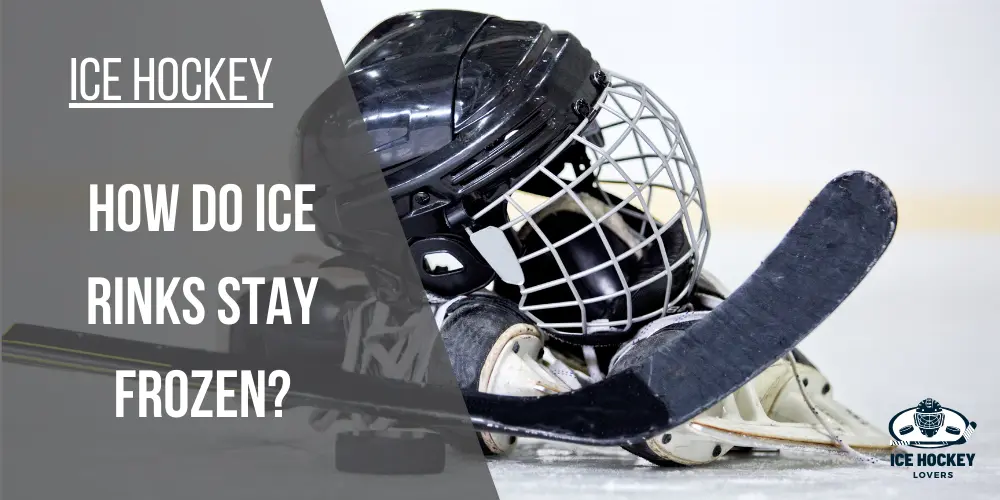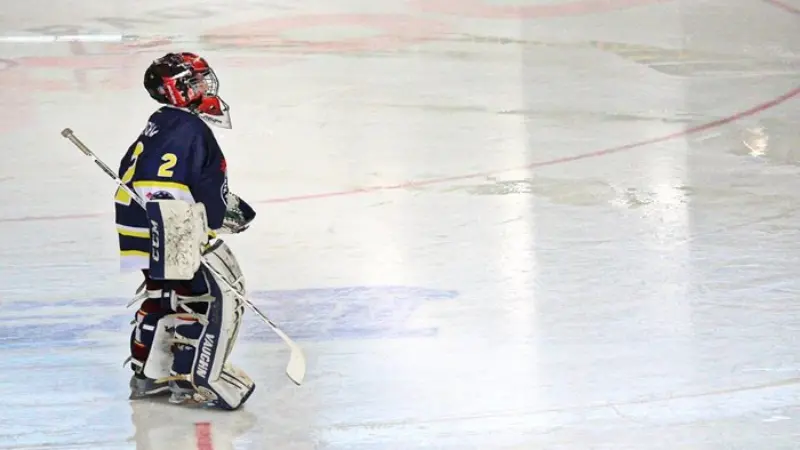The Ultimate Guide to How do Ice Rinks Stay Frozen?

Ice rinks significantly impact the player’s performance. Hockey players must be skilled enough to play on these rinks. A significant characteristic of hockey is its high-energy intermittent skating, fast swings, and quick changes in pace and duration. Thus, making and preventing ice rinks is a long process where many techniques and machines are involved.
How do ice rinks stay frozen? Several processes and techniques go into making ice rinks. The slab of ice rinks is chilled using the refrigerant system placed in one of the layers of the rink that pumps the cold glycol through pipes.
The temperature of steel pipes used under the concrete slab is kept at 0 Celsius, which helps in freezing the water placed on the slab. The Skating surface is built with the help of putting the water layer by layer and freezing it. A warm climate makes maintaining the temperature of ice rinks challenging.
If you are going to watch a hockey game played on ice, you should know about the ice rink.
This article will show you more information about how ice rinks stay frozen, making ice rinks, and the equipment used to keep the surface fresh and frozen. So, Stay tuned.
Table of Contents
How are ice hockey surfaces created?
An ice rink is a combination of different layers, such as:
Skating or First layer: This layer is formed by combining more ice layers. In this process, water is sprayed on the slab and freezes immediately; more thin layers of water are applied and allowed to freeze after the layers are built. They are marked with white and black paints, which helps the player to puck, and this entire process requires a maximum of four days.
Chilled Concrete Slab or second layer: The rink is frozen using a refrigeration system with steel pipes. These pipes are placed in the concrete slab below the skating surface.
Insulation & Heated Layer: These layers keep the ice frozen underneath the ground.
Sand, Gravel base & Groundwater drain: The whole rink is based on layers of sand, gravel also a groundwater drain.
How can we keep the ice hockey surface frozen?
There are two types of rinks natural ice rinks it frozen according to the temperature, while the other one is artificial rink cooling technologies are used to freeze such lakes. One technology is the refrigeration system which helps remove the heat from the rink surface. This process pumps chilled brine from the chiller to the pipes underneath the rink floor. When this brine passes, the heat is removed from the ice surface, keeping the temperature at -4.0° C.

The steel pipe used in this process is placed at 0° C to freeze the water placed on the top of the slab. Usually, for an average size hockey arena, 240 gallons of refrigerant is required.
How long does it take to freeze an indoor ice rink?
About 45,000 – 57,000 liters of water is needed to freeze it on the surface of a hockey rink, which has a thickness of 3/4 inch. This water can take up to 4 days to turn to ice.
How cold are indoor ice rinks?

The air temperature inside the ice rinks is 55-65 Fahrenheit, while the on-ice temperature is between 17-29 degrees. Because of ice cold skating surface and low air temperature, indoor ice rinks are cold.
Is there equipment or a machine that helps the ice stay frozen?
The player bladers let the ice surface tear up while keeping the ice rink smooth; it’s necessary for the efficient performance of the player.

The ice on the rink is resurfaced with the help of Zamboni. It is a vehicle through which the ice is shaved and collected. Afterwards, a fresh layer of heated water is applied to freeze quickly and smooth the rink surface.
How does the NHL manage Zambonis, and how often is the ice resurfaced?
The resurfacing is done using Zamboni; in this process, two Zamboni machines are required to resurface before, after the game, after warm-ups, and during playoffs.
Two machines are used because it needs to be done quickly, and it usually takes about 80-100 gallons of heated water to clean and apply a new layer.
How much does an ice rink chiller cost?
The price of Zamboni depends on the model used by the arena; Model 100, which is small in size, is available at $10,000. The cost of the Zamboni machine increases according to the size.
Frequently Asked Questions
How do ice rinks not melt?
A substance, propylene glycol, is used while making an ice rink. It can get colder than the freezing temperature of the water while staying a liquid.
Are ice rinks just frozen water?
An ice rink is made of frozen water or an artificial ice sheet created by hardened chemicals.
What is under the ice in an ice rink?
Under the ice rink, there is a layer of insulation and a heated concrete layer. These layers help in freezing ice below the ground, which could expand and then crack the rink structure.
How long does a rink take to freeze?
On a level rink, ice requires about 1 to 3 hours to freeze. At the same time, additional time is needed if the ground still needs to be levelled.
What refrigerant is used in the ice rink?
The refrigerant used in the ice rink is HCFC-22.
How deep is the ice on a hockey rink?
NHL has a specific rule regarding the thickness of the ice. Each ice rink is 3/4 inch or 0.75″ thick.
Where does the ice go after a hockey game?
Removing the ice process starts at the end of the regular season and playoffs. In this process, brine water circulates under the ice. When the ice is melted, it is broken up and picked up by the loaders.
Conclusion
Keeping the ice rink frozen is a tough job; it is costly and time-consuming as a lot of equipment and workers are required. At the same time, it is necessary as the condition of the ice surface reflects the player’s performance. It’s also essential to maintain ice surfaces smooth once constructed. Resurfacing the ice surface during the breaks, before and after every game, is necessary.

Who is Austin Taylor?
Meet Austin Taylor, your go-to source for everything ice hockey! With a passion for the sport that’s as deep as the ice itself, Austin Taylor brings you concise, expert insights and nitty-gritty details on all things hockey. From gear reviews to strategy breakdowns, Austin Taylor is your trusted guide to navigating the exhilarating world of ice hockey. Get ready to lace up your skates and dive into the game with Austin Taylor as your ultimate companion.





